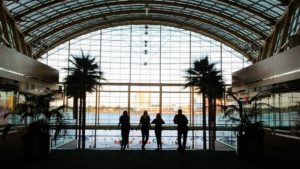It’s Climate Week and more than ever, there are concerns as to the future of life as we know it on this planet. Count me among the concerned. I am a design professional focused on buildings. Buildings are among the “culprits” associated with the production of greenhouse gas (GHG) emissions that help to warm the atmosphere. They are the subject of scrutiny and regulatory action including Public Law 97 in NYC where I work.

It is true that buildings, particularly old or poorly designed buildings in combination with their occupants, consume energy, water, and natural gas, generating emissions and waste products. Before I get carried away scapegoating the places where humans live, work, learn, heal, and play, I suggest we pause and give thought to three facts that interact with our GHG reduction strategies:
- buildings are essential for our survival;
- our activities in buildings produce goods, services, and healthy, happy people as well as emissions and waste; and
- building design decisions can be the primary difference between efficient, healthy, and productive environments.
So, if you agree that we cannot live without them and that some buildings are good actors and others not, what design decisions matter most? How can they be made with the goal of generating wins for their owners, occupants, and host communities? There are a vast number of active and passive design features that impact building performance. Those features must balance occupant needs and demands with costs, timing and regulatory compliance.
In the past, building designers, owners, and operators debated design decisions largely on a basis of lowest first cost. That “low cost” mentally discounts the full value of social, environmental, and financial costs and benefits that accrue to stakeholders including building owners, occupants, host communities, and the environment. Those costs and benefits can be exchanged between stakeholders with the goal of optimizing returns in the form of improved health, productivity, resilience, and many other outcomes represented in the Triple Bottom Line (TBL).
TBL returns function as a form of currency that can provide incentives to owners, occupants, and host communities to share the burden of retrofitting existing buildings and driving new buildings toward more sustainable and resilient performance. The key to creating this currency resides in the use of credible economic analysis that reaches further than traditional business cases. A combination of Cost Benefit, Life Cycle Cost, and Triple Bottom Line Analyses have been applied on behalf of more than $100 Billion in real building and infrastructure projects to reveal value associated with investments in sustainable design features. The analytical process used by federal agencies, state governments, municipalities, utilities, airports, publicly traded companies, and commercial real estate concerns is changing the way design decisions are prioritized and returns on investment are allocated.
We know that buildings can make contributions that go far beyond shelter for survival. They can be places we love to live in; where we can lead healthier lives, learn more, heal faster, work productively, and; reduce our GHG emissions, water consumption and waste generated. It’s time to leverage objective economic analysis in combination with state-of-the-art design, construction, and operations practices to make smart decisions that leverage climate responsive strategies and grow fantastic communities where everyone reaps a responsible return.
John F. Williams,
Chairman & CEO, Impact Infrastructure makers of Autocase Software, and Board Chair, the Institute for Sustainable Infrastructure (ISI).




